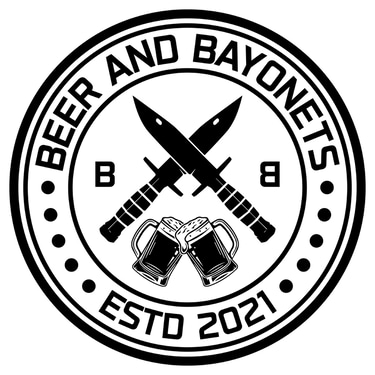Armory Pistol Fundamentals
Today, we break down the skills and knowledge you need to become a better shooter, one step at a time


Armory Pistol Fundamentals
Welcome back to Beer and Bayonets; today, we break down the skills and knowledge you need to become a better shooter, one step at a time. We’re diving into a topic I hear about constantly: transitioning from being “pretty good with a rifle” to proficient with a pistol. Spoiler alert—if you think you're a rifle expert but struggle with pistols, chances are you need to work on the fundamentals across the board. But don’t worry—I’m here to help.
The Challenge: Why Pistols Feel Harder
Let’s get one thing straight: shooting a pistol isn’t inherently harder than shooting a rifle; it just requires a different application of the same fundamentals. Rifles offer more stability through slings, prone positions, and stock welds, which help mask shaky fundamentals. With a pistol, it’s just you, the gun, and gravity. That’s where proper technique becomes non-negotiable.
The Solution: Back to Basics
The fundamentals of marksmanship—steady body position, aiming, breath control, trigger squeeze, and follow-through—apply to both rifles and pistols. Let’s break them down specifically for pistol shooting:
1. Stance
Your stance is your foundation. Think of it like preparing to take a punch:
Feet shoulder-width apart.
Knees slightly bent.
Torso square to your target.
This stable position helps absorb recoil and maintain balance.
2. Grip
A good grip is crucial for recoil control:
Place the meaty part of your firing hand high on the beavertail (the curve at the back of the grip).
Wrap your fingers around the grip and align your thumbs along the frame.
Lock your wrists to prevent recoil from throwing off your aim.
3. Trigger Manipulation
Jerking or slapping the trigger is a common issue. Instead:
Slowly and steadily press the trigger.
Don’t anticipate the shot; the goal is for it to surprise you.
After firing, hold the trigger to the rear and reset it carefully for follow-up shots.
4. Aiming
Focus on the front sight post. Align it with the rear sight and ensure equal height and light on both sides. Your focus should remain on the front sight as you aim for a precise point on your target. Remember: aim small, miss small.
Practice Makes Permanent
You don’t need expensive gadgets to practice. Here’s a simple drill you can do at home:
Place a small dot (like a piece of electrical tape) on a wall.
Practice your draw, stance, grip, and trigger press.
Dry fire while maintaining proper sight alignment and focus.
Repetition is key. Set aside 10-15 minutes daily to reinforce good habits. Remember, perfect practice makes perfect. Slow is smooth, smooth is fast, and trying to rush will only reinforce bad habits.
Final Thoughts
Mastering pistol shooting isn’t about shooting fast; it’s about shooting right. Once you’ve nailed the fundamentals, speed will come naturally. Take your time to practice correctly, and soon enough, you’ll see a noticeable improvement in your accuracy and confidence.
Got questions or topics you’d like to see covered next? Drop them in the comments below. Until next time, stay safe and keep practicing.
Cheers,
Beer and Bayonets

